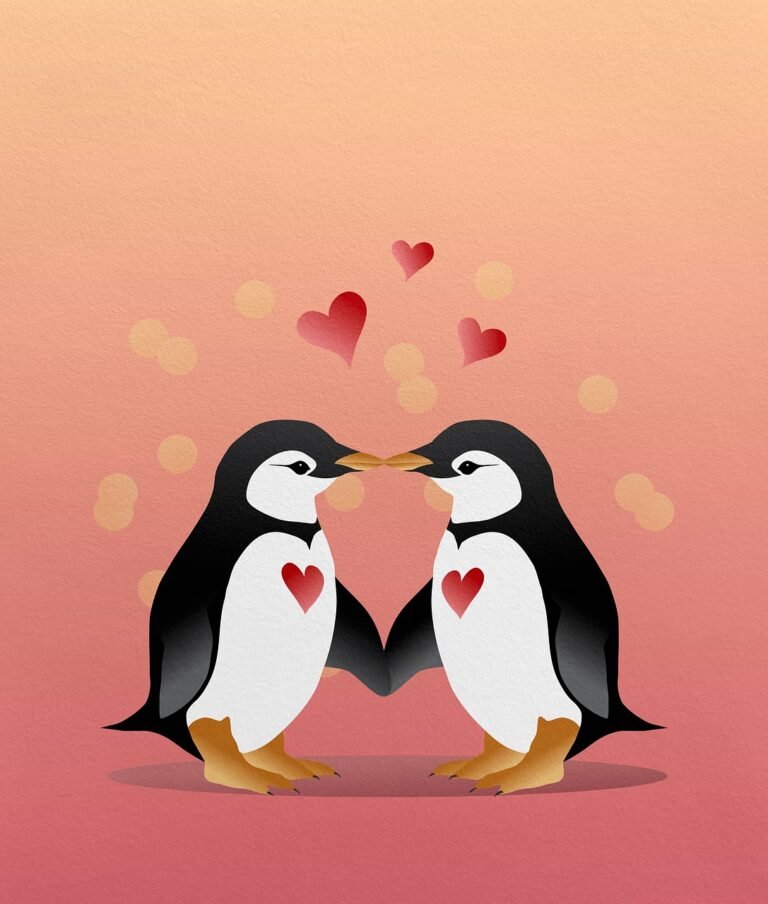
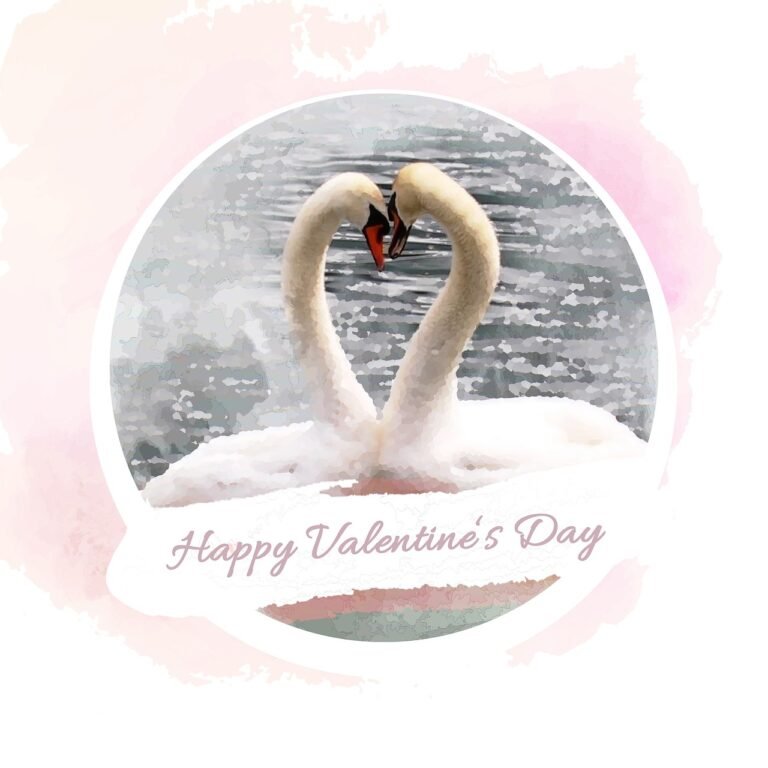
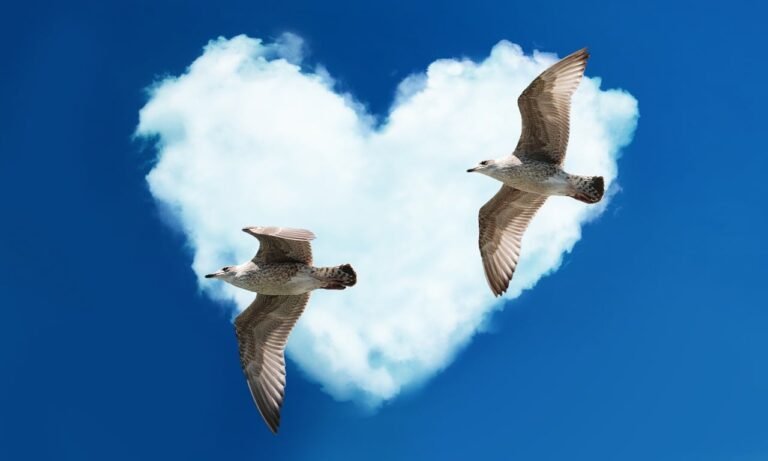


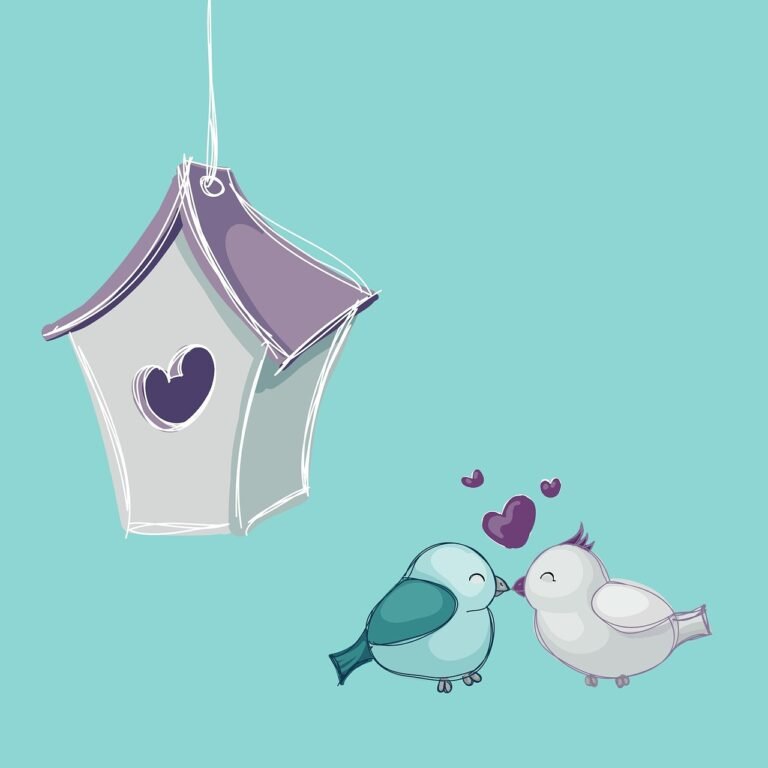
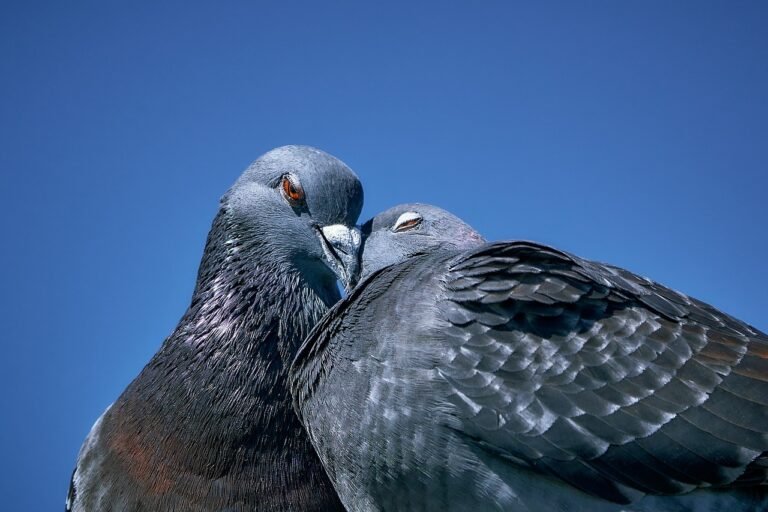


This article contains Amazon Affiliate Links
Have you ever wondered where the term “lovebirds” came from? Maybe you’re just like me and curious about what animals are associated with, or have historical ties to Valentine’s day. When the latter thought came to my mind the thought of birds suddenly fluttered into my mind as well. The elegant, beautiful, creatures undoubtedly have earned their place on Valentine cards and banners alike. Let’s (swan) dive into what birds are linked to Valentines Day and why.
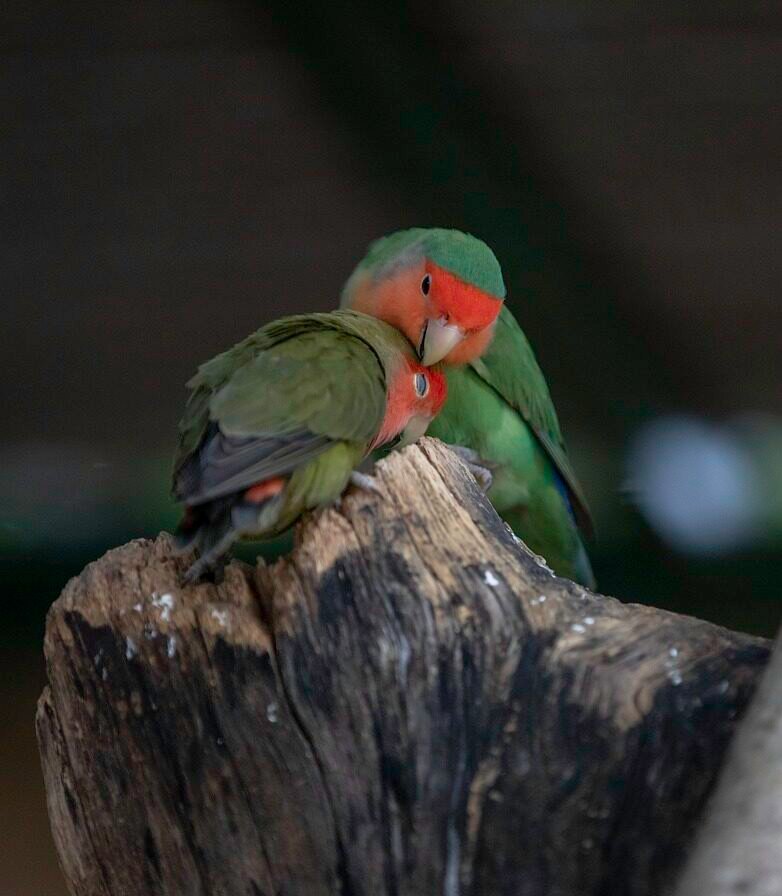
Lovebirds
According to the Merriam-Webster Dictionary, the number one definition of lovebirds is: "any of various small, usually gray or green parrots (especially genus Agapornis of Africa) that show great affection for their mates." The second definition of lovebirds is: "people who are lovers; people who are in a romantic relationship."
It is clear why Lovebirds hold the significance they do when it comes to the Valentine’s holiday! These feathered couples are the epitome of a loving partnership and give a perfect example of what love should look like. Let’s delve deeper into their lives and how loving these birds are.
 Lovebirds kickstart their romantic journey with a shared meal, akin to human courtship rituals. This act, where the male offers food to the female, holds deep significance—it’s a gesture showcasing his commitment to the partnership and provision of sustenance. Beyond this, Lovebirds engage in mutual grooming, harmonious duets, and the establishment of lifelong bonds. Their relationship embodies teamwork, with both partners sharing decision-making and alternating incubation duties to ensure each other’s well-being.
Lovebirds kickstart their romantic journey with a shared meal, akin to human courtship rituals. This act, where the male offers food to the female, holds deep significance—it’s a gesture showcasing his commitment to the partnership and provision of sustenance. Beyond this, Lovebirds engage in mutual grooming, harmonious duets, and the establishment of lifelong bonds. Their relationship embodies teamwork, with both partners sharing decision-making and alternating incubation duties to ensure each other’s well-being.
In an excerpt from his article (Why are Lovebirds Called Lovebirds (5 Reasons Why?) March 2022), Dr. Ali Shahid explains where Lovebirds got their name from: “Lovebirds are called lovebirds because they strongly bond with one mate for their whole life, showing a lot of care and affection, much like how people show love. The name “lovebirds” comes from the Greek words “agape,” meaning love, and “ornis,” meaning bird. So, “Agapornis,” their genus name, literally means “birds that love each other.” These birds like being social and don’t enjoy being alone. If one bird from a pair passes away, the other can feel very sad and might even die from this sadness. They have special ways to talk to their mate and babies, creating their own language.”
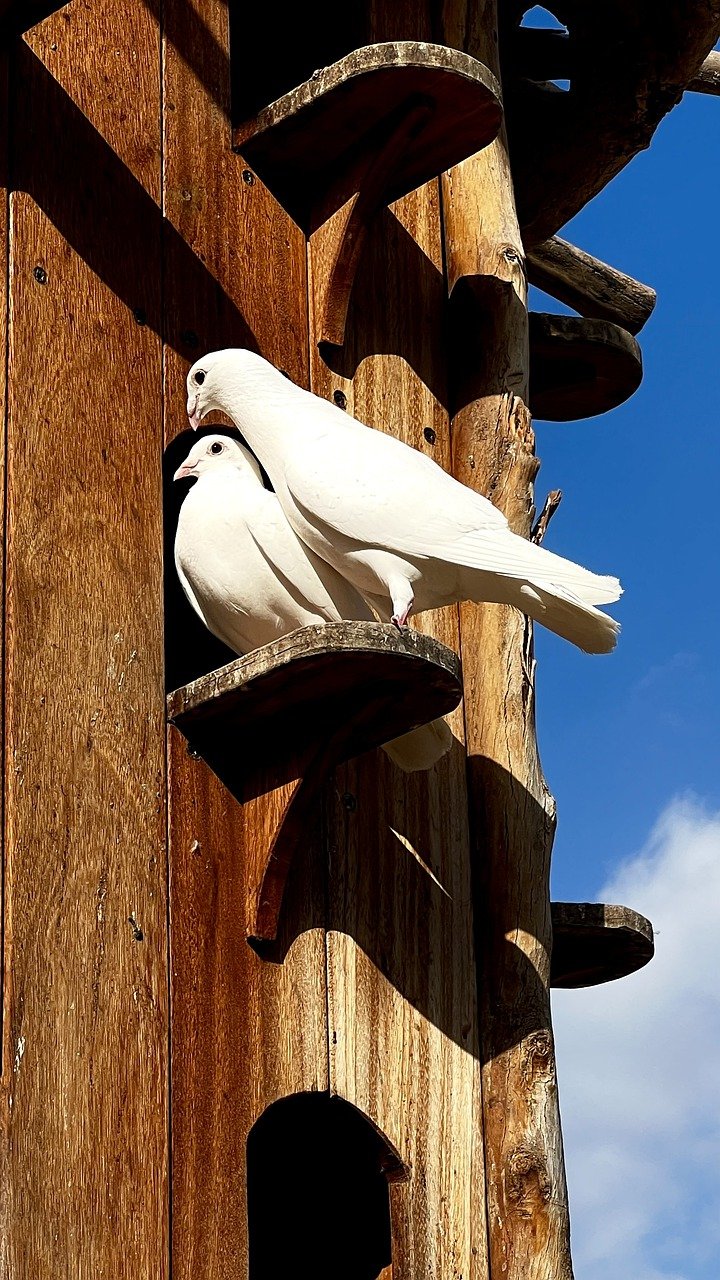
Doves
The Merriam Webster Dictionary describes the term 'Lovey-dovey' as : expressing much love or sentimentality or to be "Mushy"

Doves are widely recognized as symbols of peace and love, and it’s easy to see why. With their gentle demeanor, delicate features, and trusting gaze, they exude symbolism effortlessly. Let’s explore their significance and how they embody love.
Although not all doves form lifelong partnerships, they are inherently affectionate creatures, often displaying what we affectionately call “lovey-dovey” behavior in their daily lives. In their relationships, they share responsibilities like housekeeping and parenting, reflecting a partnership focused on nurturing and care.
Now, let’s delve into their symbolism, particularly their connection to Valentine’s Day. Doves have long been associated with this romantic occasion, serving as perfect models for Valentine’s cards. In ancient mythology, they were considered the beloved pets of Aphrodite, the goddess of love. Depictions of Aphrodite often feature doves softly perched on her hand or fluttering nearby, underscoring their connection to matters of the heart.
Biblically, doves symbolize purity and peace, with white doves often likened to the purity of a bride’s dress. I have vivid memories of my mother raising white doves during my childhood, bringing them to weddings for couples to release. Their graceful presence added an elegant touch to ceremonies celebrating love and partnership, highlighting the enduring significance of doves on Valentine’s Day.
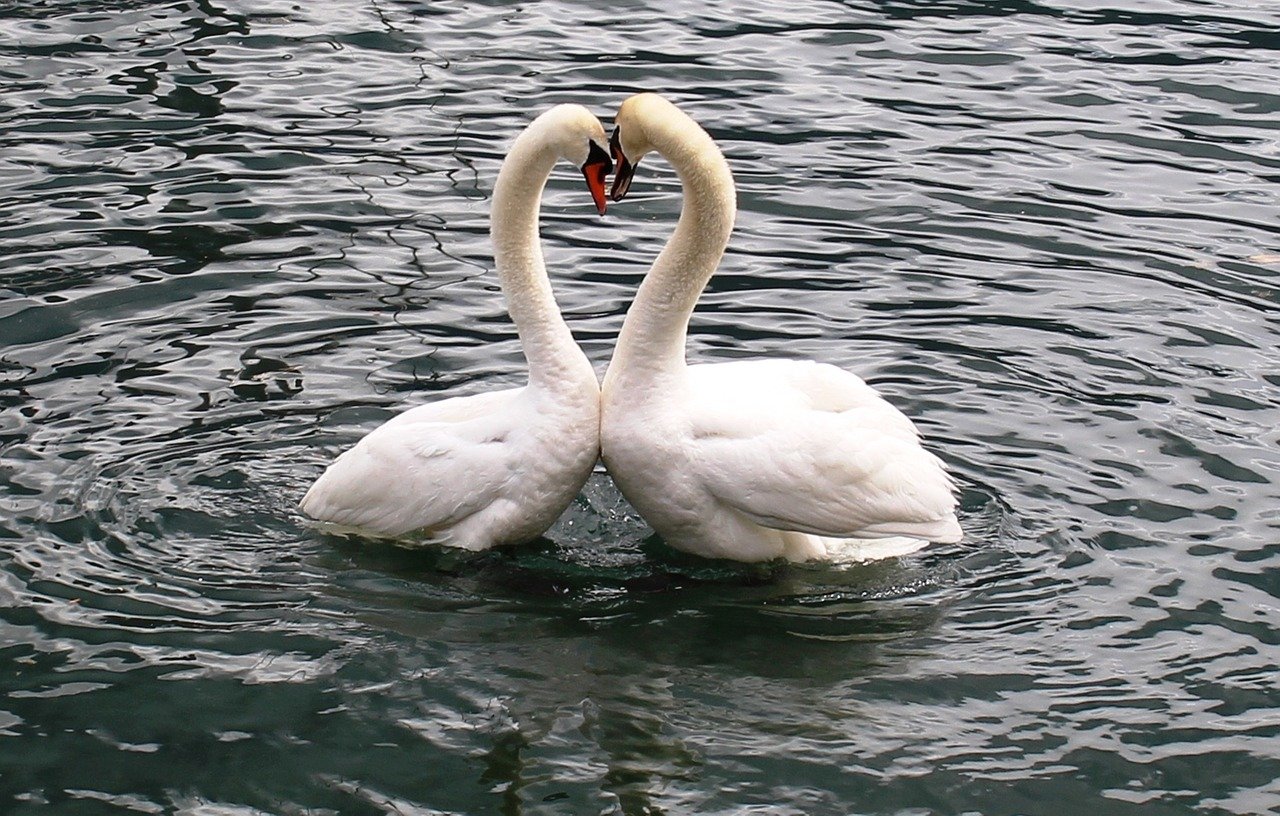
Swans
Gath C. Clifford writes in worldbirds.com : A swan personality is mixed–so it is an ambiguous symbol of light, love, romance, death, transformation, poetry, and melancholy passion and is especially highly represented in ballets and operas.
Examining the image above, we’re presented with a striking example of swans forming a heart shape by arching their necks—a sight captivating enough to warrant their inclusion in Valentine’s Day decorations. Yet, there’s more to swans that make them the ideal avian representation for this romantic holiday. Across various cultures, swans are steeped in symbolism, underscoring their profound historical significance.
Regarded as emblematic of romance, swans glide gracefully through both water and air, captivating observers with their elegance. Their tendency to form lifelong partnerships and mourn the loss of a mate further showcases their romantic allure. Swans diligently groom not only themselves but also their partners, sharing in the responsibilities of nest-building and incubation, embodying a mutual commitment akin to human relationships.
In the realm of symbolism and mythology, swans occupy a prominent place, featuring prominently in tales spanning from operas and ballets to folklore and weddings. In Greek mythology, for instance, Zeus assumes the guise of a swan to approach Queen Leda, illustrating the bird’s role as a symbol of divine love and desire. Similarly, Native American folklore associates swans with eligible brides, while in Asian cultures, they are heralded as bearers of auspicious blessings for marriages.
From the romantic allure of “Swan Lake” to the timeless tales of Zeus and Queen Leda, swans have ingrained themselves deeply in our collective consciousness, embodying the enduring themes of love, fidelity, and fortune across cultures and centuries.

Penguins
"A penguin is a peaceful bird, who can’t fly, but thrives in a cold, harsh climate. While they often symbolize wisdom, these animals have other positive traits, such as loyalty, faithfulness, and balance."- Cynthia Demers writes in 'Penguin Symbolism – A Symbol Of The Free And Unbreakable Spirit' at https://www.richardalois.com/symbolism/penguin-symbolism
Penguins—why not? These adorable birds have made their mark as popular icons, particularly during Valentine’s season. If you’ve recently perused the Valentine card section or strolled through the stuffed animal aisle, chances are you’ve encountered these cuddly creatures adorning various merchandise. Penguins have seamlessly integrated into our Valentine’s imagery, becoming a beloved symbol of affection and devotion.
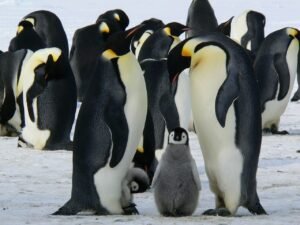
Known for their strong familial bonds and unwavering loyalty, penguins exhibit a remarkable capacity for love and care, much like the other birds discussed in this article. They express their affection through various gestures, from meeting each other’s needs to sharing responsibilities, nurturing their offspring, grooming their partners, and engaging in tender courtship rituals.
Several penguin species form lifelong partnerships, mirroring human relationships in their commitment and dedication. Interestingly, like humans, certain penguins engage in a form of proposal. Male penguins embark on a quest to find the perfect pebble, which they then offer to their chosen mate. This ritual mirrors the human tradition of proposing with a ring, highlighting the parallels between our species.

Symbolically, penguins are associated with traits like determination and familial unity, echoing their steadfast dedication to their families. Visually, the yin-yang resemblance adds another layer to their symbolism, emphasizing balance and harmony in relationships. However, it’s not these symbolic associations that directly tie penguins to Valentine’s Day; rather, it’s their genuine affection for each other and their undeniable charm that endears them to us during this romantic season.
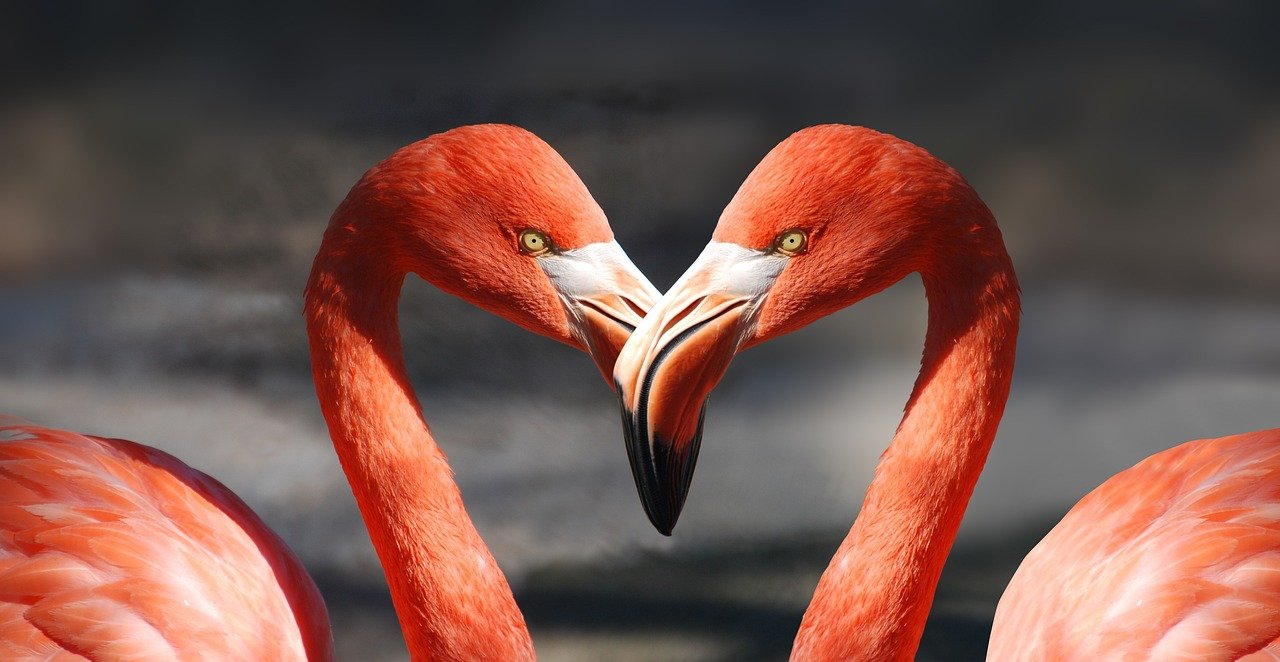
Flamingos
"Due to their elaborate courtship rituals, romantic appearance, and parental dedication, flamingos are often taken as symbols of romance. They form intense pair bonds and rear their young together" - Written by Hailey Brophy in her article 'Flamingo Symbolism & Meaning (+ Totem, Spirit, & Omens)' on worldbirds.com
While flamingos may not be the first creatures that come to mind when thinking of Valentine’s Day, they possess qualities that surprisingly align with the spirit of love and companionship. This holiday season, I’ve even spotted them gracing cards and decorations, hinting at a connection that runs deeper than meets the eye.
Flamingos boast a color palette synonymous with Valentine’s Day, adorned with hues of red, pink, and white that accentuate their striking appearance. Beyond their visual appeal, these birds embody qualities associated with love and romance in various cultures, including elegance, passion, resilience, and strong relationships. However, their significance to Valentine’s Day extends beyond mere symbolism—it’s ingrained in their very way of life.
 Having once attended a class at a zoo featuring flamingos, I observed firsthand the peaceful demeanor these birds display. Despite residing in bustling communities, they coexist harmoniously, displaying genuine care for their partners and offspring while maintaining amicable relations with their flock mates. Paired flamingos engage in elaborate mating dances and rituals, demonstrating a profound affection and commitment to their chosen mate.
Having once attended a class at a zoo featuring flamingos, I observed firsthand the peaceful demeanor these birds display. Despite residing in bustling communities, they coexist harmoniously, displaying genuine care for their partners and offspring while maintaining amicable relations with their flock mates. Paired flamingos engage in elaborate mating dances and rituals, demonstrating a profound affection and commitment to their chosen mate.

Flamingos serve as living embodiments of love, effortlessly capturing our hearts with their captivating displays of affection. Understanding the depth of their contribution to the concept of love makes it clear why they’ve earned a place on our Valentine’s cards. As we continue to admire these enchanting birds and other symbols of love, they persist in their own expressions of devotion toward one another.

To complete our deep dive into love birds, I will leave you with a few thoughts to ponder on. The next time you hear a melodic chirping sound or see a bird gathering nest materials, consider it a sign of love. Will you look for some of these magnificent feathered creatures the next time you visit a bird sanctuary? Observe bird behavior while discovering that the reason behind most of their actions would be the same reason we celebrate Valentine’s Day.
Thanks for reading!
Sources and credits:
Cynthia Demers (09/08/2021) Penguin Symbolism – A Symbol Of The Free And Unbreakable Spirit
https://www.richardalois.com/symbolism/penguin-symbolism
Dina Sostarec (November 11, 2023) Do Doves Mate for Life? 8+ Amazing Facts About These Loyal Birds
https://a-z-animals.com/articles/do-doves-mate-for-life-amazing-facts-about-these-loyal-birds/
Don Atkins- The Bond of a Lifetime: The Mating Habits of Swans
The Bond of a Lifetime: The Mating Habits of Swans
Dr. Jane Smith ( September 7, 2023) How Do Lovebirds Mate? A Look At Courtship And Breeding Behaviors
https://www.faunaadvice.com/how-do-love-birds-mate/
Dr. Ali Shahid ( March 2022) Why Are Lovebirds Called Lovebirds (5 Reasons Why?)
Why are Lovebirds Called Lovebirds (5 Reasons Why?)
Garth C. Clifford (September 24, 2021) Swan Symbolism & Meaning (+Totem, Spirit & Omens)
https://worldbirds.com/swan-symbolism/
Hailey Brophy ( September 26, 2021) Flamingo Symbolism & Meaning (+ Totem, Spirit, & Omens)
https://worldbirds.com/flamingo-symbolism/
Jim Addison (February 1, 2023) Revealing the Deeper Meaning Behind Swan Symbolism
Revealing the Deeper Meaning Behind Swan Symbolism
Merriam-Webster. (n.d.). Lovey-dovey. In Merriam-Webster.com dictionary. Retrieved January 28, 2024, from
https://www.merriam-webster.com/dictionary/lovey-dovey
Merriam-Webster. (n.d.). Lovebird. In Merriam-Webster.com dictionary. Retrieved January 28, 2024, from
https://www.merriam-webster.com/dictionary/lovebird
Nature Blog Network (n.d.). Penguins: Social Behavior and Survival Focus
Penguins: Social Behavior and Survival Focus
Nick Lee (April 13, 2020) Male Penguins Propose With A Pebble And Five Other Cute Animal Courtship Rituals
Male Penguins Propose With A Pebble And Five Other Cute Animal Courtship Rituals
